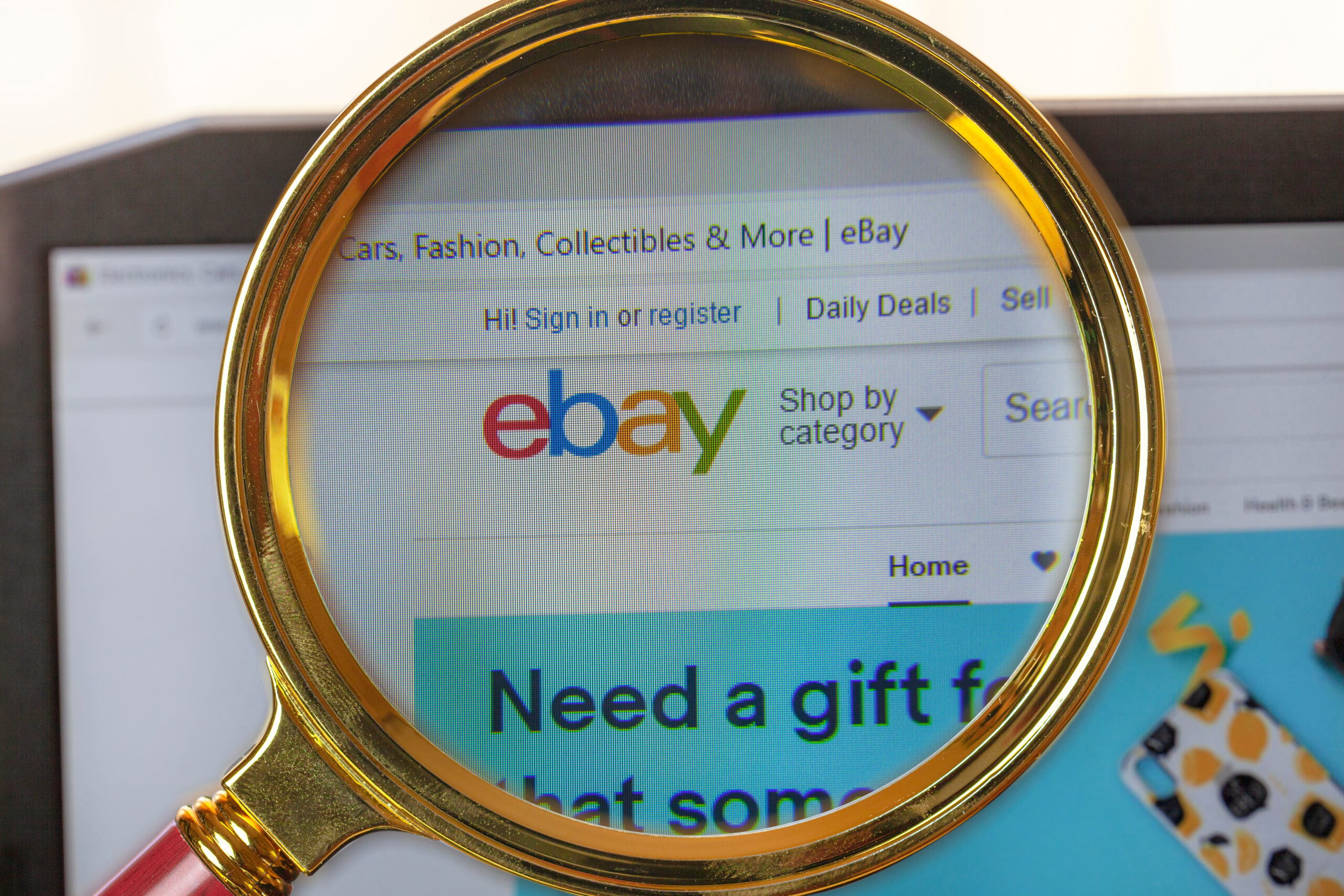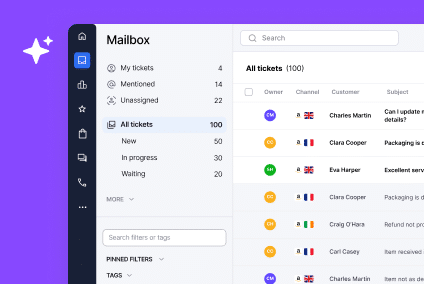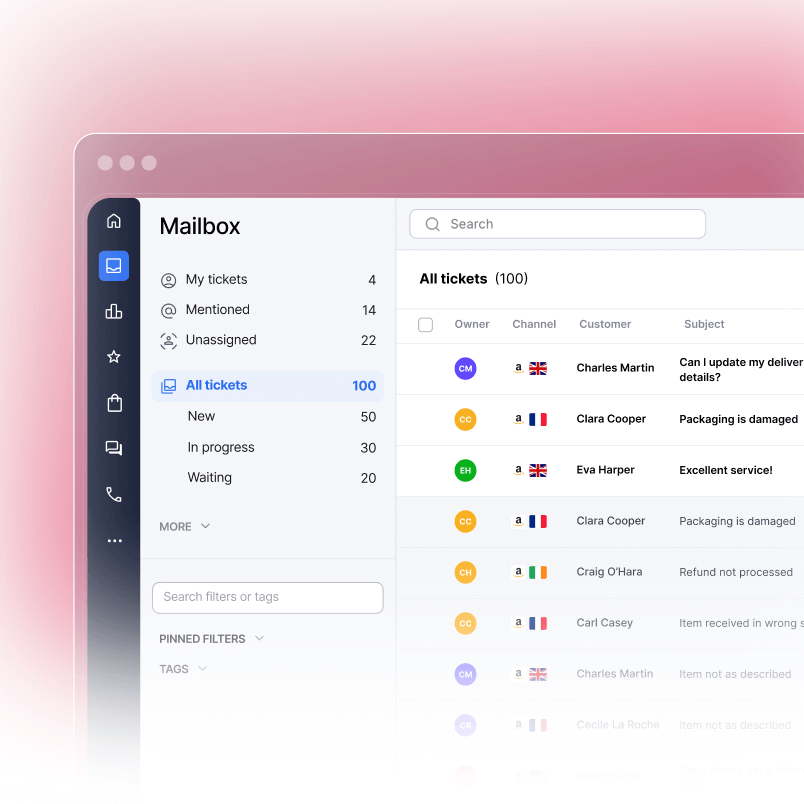Your eBay Promoted Listings are driving clicks. But are those clicks converting into sales? We see this problem all the time. Sellers invest in promoted listings, watch their visibility spike, then watch conversions stall because customer inquiries go unanswered or responses come too late. Here’s the gap most sellers miss: promoted listings without strong customer support is like opening a store with no one at the register.
This guide shows you how to combine eBay Promoted Listings with strategic customer support practices to turn more clicks into sales, reduce returns, and protect your seller rating. We’ll cover the setup, the KPIs that matter, and the exact tactics top sellers use to align ads and service for measurable ROI growth.
What Are eBay Promoted Listings and How Do They Work?
eBay Promoted Listings are a performance-based advertising tool that moves your items higher in search results and category pages. Unlike traditional display ads you pay upfront for, you only pay a commission on sales generated from promoted listings.
Here’s how they function. When you create a promoted listing campaign, you select which items to advertise and set a bid amount, usually a percentage markup on your item’s selling price. eBay then places your items in prime real estate across the marketplace. Shoppers see your promoted items at the top of search results or featured on category pages.
Over 940,000 eBay sellers use the promoted listings feature on more than 250 million listings, making it one of the most widely adopted advertising tools on the platform. eBay offers two types of promoted listings. Standard Promoted Listings work for sellers of any level and let you advertise individual items or store inventory, while Advanced Promoted Listings offer more control over targeting and budgeting at the campaign level.
The value is clear. More visibility means more views. More views mean more clicks. And more clicks mean more chances to convert shoppers into buyers. But visibility alone doesn’t close sales. That’s where customer support enters the picture.
Why Customer Support Directly Impacts Your Promoted Listings ROI
Here’s what we know from talking with hundreds of eBay sellers. A shopper clicks on your promoted listing. They land on your item page. They have a question about size, color, shipping, or condition. They send you a message.
Now you have a window. If you respond quickly with a helpful, detailed answer, that shopper often buys. If you ignore them or respond too slowly, they move to a competitor’s listing. Your promoted listing fee is wasted.
This dynamic scales across your entire catalog. When you run promoted listings, you increase inquiry volume. If your support process isn’t ready to handle that volume, conversion rates drop. You’re paying to bring traffic to a bottleneck.
The data backs this up. A 1-minute response time leads to 391% more conversions, and leads reached within 5 minutes are 21 times more likely to turn into customers compared to those contacted after 30 minutes. Seller rating is another piece. eBay’s algorithm considers seller feedback scores when deciding which listings to promote and how often to display them. Late responses and unresolved issues tank your feedback score. A lower score means fewer ad impressions, even if you keep paying your bid. You’re essentially getting penalized in the auction house while still paying entry fees.
The sellers we work with who nail this combination do one thing well. They treat customer support as part of their advertising strategy, not a separate cost center. When you align support response times with promoted listing campaigns, you convert more traffic at a lower cost per acquisition.
Support KPIs That Directly Influence Campaign Performance
eBay tracks specific metrics that affect both your seller standing and your promoted listings reach. Understanding these metrics helps you see why support matters.
Seller Feedback Score is the foundation. eBay calculates this by looking at positive, negative, and neutral ratings you receive from buyers. The higher your score, the more eBay trusts you. A score above 98% unlocks better algorithm placement and improved search performance. A score below 98% limits your ad reach regardless of how much you bid.
Response Time impacts feedback scores directly. eBay doesn’t measure this formally, but buyers do. Nearly three-quarters of consumers expect a response within 24 hours or sooner. When you respond to inquiries within 24 hours, satisfied buyers leave positive feedback. Slow responders get neutral or negative feedback. We’ve seen sellers lose 5 to 10 points on their feedback score because they let messages pile up during peak seasons.
Return Rate shows how many buyers request refunds after purchase. High return rates signal that either your listings are misleading or your items don’t match descriptions. eBay penalizes high return rates by reducing promoted listings visibility. When you handle pre-sale questions well, buyers know what they’re getting. Return rates drop. Your ad performance improves.
Defect Rate is eBay’s term for cases where buyers file disputes, not just return requests. A high defect rate is a red flag to eBay. It suggests communication broke down or product issues weren’t addressed. Your promoted listings reach shrinks when defect rates climb.
Cancelation Rate tracks how often you cancel orders. High cancelations occur when you oversell or don’t manage inventory well. eBay views repeated cancelations as unreliable service. Again, promoted listings visibility drops.
Here’s a quick reference showing how these KPIs interconnect:
| KPI | eBay Standard | Impact on Ads | Support Connection |
| Feedback Score | 98%+ preferred | Higher impressions, better placement | Fast responses and issue resolution |
| Response Time | 24 hours | Influences buyer satisfaction ratings | Core support metric |
| Return Rate | Below 5% | Maintains ad visibility | Pre-sale clarity prevents returns |
| Defect Rate | Below 1% | Protects campaign reach | Resolution speed and quality |
| Cancelation Rate | Below 2% | Supports algorithm trust | Inventory management and communication |
Strategies to Pair Support With Promoted Listings for Winning Results
The real magic happens when you align your support operations with your promoted listings timeline. We’ll break this into four phases.
Pre-Sale Phase: Respond Fast to Inquiries
A shopper sees your promoted listing and clicks. They land on your item page and have questions before buying. This is your first conversion opportunity.
Set up a fast response system. Use message templates or auto-replies to acknowledge inquiries within 15 minutes if possible. Let buyers know you’re actively monitoring questions. Then provide detailed answers within 4 hours. 93% of customers are more likely to engage with brands that respond quickly, and businesses that prioritize fast response times see increased conversion rates.
Route high-value buyer inquiries to your best team members. If someone is asking detailed questions about a high-ticket item, make sure an experienced seller handles it. Generic, slow responses lose these sales.
Use your eBay inbox to flag urgent messages. Prioritize questions from buyers with completed purchases or high bid amounts. These buyers have already decided to trust you. Move quickly to close the deal.
During Promotion Phase: Monitor Questions Closely and Update Listings
Once your promoted listings are live, your visibility increases. That means more questions. Check your eBay inbox multiple times daily, especially during peak hours (evenings and weekends for most categories).
Answer questions within 24 hours without exception. Even if you don’t have an immediate answer, respond to acknowledge the question and give a timeline for a full response. 62% of businesses don’t respond to customer emails at all, while those that do respond average over 12 hours. Speed differentiates you from the competition.
Use buyer questions as data. If three people ask about the same product feature, update your listing description. If buyers mention shipping concerns repeatedly, clarify shipping details and costs prominently. This reduces follow-up questions and builds buyer confidence.
Document common questions in a knowledge base or template library. When you see a question you’ve answered before, use your template. This speeds response time and ensures consistency.
Post-Sale Phase: Automate Positive Feedback Requests and Encourage Repeat Business
After the sale, your job isn’t finished. Buyers who have good post-sale experiences leave positive feedback, which boosts your score and ad performance.
Send a friendly message 1 to 2 days after delivery confirmation. Thank the buyer for their purchase. Let them know you’re here if they have questions. Keep it brief and genuine, not salesy.
Request feedback 5 to 7 days after delivery, once buyers have had time to receive and inspect items. Many eBay sellers send automated feedback requests. Keep these professional but warm.
Include a note about future purchases or related items. If someone bought a phone case, mention that you carry screen protectors. 93% of customers are more likely to make repeat purchases with companies that offer excellent customer service, and they tend to leave better feedback.
Track buyer repeat purchase rates. Sellers who focus on post-sale support see 15 to 20% of buyers return for second purchases. Each repeat buyer improves your average cost per acquisition and reinforces your feedback score.
Returns and Resolutions Phase: Prevent Returns With Clarity, Resolve Issues With Speed
Returns directly impact your ROI. Every return wastes your promoted listings spend on that transaction and costs you in restocking and fees.
When a buyer requests a return, respond within 24 hours. Most returns happen because of miscommunication, not product defects. Ask clarifying questions. Sometimes a quick answer prevents the return entirely. If a return is legitimate, approve it fast. Quick approvals reduce buyer frustration and negative feedback.
Keep resolution templates ready for common issues. Item arrived damaged? Here’s your template response. Item not as described? You know what to say. Standard responses aren’t cold. They’re efficient and professional.
Track return reasons in your records. If a specific item type has a high return rate, investigate. Is your description unclear? Is the item breaking in shipping? Use this data to improve listings and prevent future returns on promoted campaigns.
When you prevent returns and resolve issues quickly, your defect rate stays low. eBay rewards this with better promoted listings placement.
Tools That Connect eBay Promoted Listings With Smart Customer Support
You don’t have to manage everything manually. Several tools integrate eBay promoted listings tracking with customer support workflows.
eDesk is a popular choice for eBay sellers. It consolidates your eBay inbox with multi-channel messaging, so you manage inquiries from eBay, email, and social media in one dashboard. eDesk flags high-priority messages and lets you create response templates. Many sellers use eDesk to reduce response time from 8 hours to under 2 hours.
ChannelReply connects support platforms to eBay, making it useful if you’re already running support systems for other channels. It pulls eBay messages into support tickets, so your team never misses an inquiry.
3Dsellers combines promotions management with messaging tools. You can track promoted listings performance and monitor customer inquiries in one platform. It’s especially useful for sellers managing large catalogs with multiple campaigns.
For most eBay sellers starting out, eDesk offers the best balance of features and ease of use. It’s designed specifically for eBay sellers and integrates promoted listings data with support workflows.
How to Set Up Promoted Listings and Support Alignment in 5 Steps
Step 1: Audit Your Current Seller Metrics
Before launching promoted listings, know your baseline. Log into eBay Seller Center and note your Feedback Score, Response Time, Return Rate, and Defect Rate. If your score is below 98%, focus on building it before scaling promoted listings spend.
Step 2: Set Up eBay Promoted Listings Campaigns
Choose which items to promote. Start with your best performers and highest-margin items. Sellers who tailor their promotion rates by category see an average 23% higher ROI compared to those using flat rates across their inventory. You can increase bids as you see positive ROI.
Create 2 to 3 campaigns if you have different product categories. This lets you test messaging and monitor performance by category.
Step 3: Connect a Support Tool to Your eBay Inbox
Whether you choose eDesk or another support integration, connect it to your eBay account. Configure your templates and message rules. Set up notifications so you don’t miss inquiries during peak hours.
Step 4: Set SLA Rules and Response Templates
SLA stands for Service Level Agreement. Set a rule that all inquiries get acknowledged within 15 minutes and answered within 4 hours. Train anyone on your team handling messages to follow this standard.
Create templates for common questions in your category. A template doesn’t mean you send generic responses. It means you have a starting point that you customize for each buyer.
Step 5: Track ROI on Both Campaign and Support Sides
Monitor your promoted listings performance in eBay Seller Center. Track clicks, impressions, conversion rate, and cost per sale. Then track support metrics. How many inquiries convert to sales? What’s your response time trend? As you improve support speed, you should see conversion rates climb.
Promoted Listings increase international sales by 35% in Germany and 54% in the USA when paired with proper support practices and safe bidding strategies. Calculate your total ROI this way: (Revenue from Promoted Listings Sales – Total Campaign Spend – Support Tool Costs) divided by (Campaign Spend + Support Tool Costs). If this number is positive and growing, you’re winning.
What Sellers Are Seeing in Practice
A seller in the electronics category ran promoted listings for refurbished laptops. Her initial conversion rate was 8%. She was paying around 5% in eBay promoted listings fees and wondering if it was worth it.
She switched to a structured support process using an integrated support tool. Response time dropped from 6 hours to 1.5 hours. Within two weeks, her conversion rate climbed to 12%. Suddenly, the promoted listings spend was returning solid profit.
The reason was simple. Laptop buyers have more questions than casual shoppers. The faster she answered, the more confident they felt buying. Return rate dropped from 12% to 4%. Her feedback score improved. eBay started showing her listings more often without her increasing bid amounts. She cut her cost per sale by 30%.
This pattern repeats across furniture, fashion, collectibles, and mobile devices. Categories with higher inquiry volume benefit most from linking support speed to campaigns, as businesses that prioritize customer experience see a 4-8% increase in revenue compared to their competitors.
Common Questions About eBay Promoted Listings and Customer Support
Do seller ratings affect eBay Promoted Listings?
Yes, directly. Feedback scores below 98% limit your access to Advanced Promoted Listings and reduce impressions on Standard campaigns, as seller performance directly influences eBay’s search algorithm. eBay also considers seller ratings when determining ad placement and frequency within search results.
What support tools integrate with eBay?
The main options are eDesk, ChannelReply, 3Dsellers, and native eBay tools. eDesk is most widely used for eBay-specific sellers. ChannelReply suits sellers with multi-channel support needs. 3Dsellers works well for sellers managing large catalogs.
How can I reduce returns while running eBay Promoted Listings?
First, improve listing clarity by answering common questions in your description. Second, respond fast to pre-sale inquiries. Most returns stem from miscommunication, not defects. Third, include detailed photos and measurements. Fourth, be upfront about condition and any defects. Transparent listings prevent buyer disappointment.
What’s a realistic ROI for eBay Promoted Listings?
Promoted listings generated sales increases of 35% to 54% at advertising costs 2-3 times lower when using safe bidding strategies. Most sellers see 1.5 to 3 times return on promoted listings spend. A seller investing 100 dollars in promoted listings fees usually generates 150 to 300 dollars in additional revenue. This assumes proper support and conversion optimization. Poor support typically reduces this to 0.8 to 1.2 times, making campaigns unprofitable.
Can I run promoted listings without improving customer support?
Technically yes, but it won’t be efficient. You’ll drive traffic to listings, but conversion rates will suffer. You’re paying to bring buyers to your store and then losing them at checkout because they can’t get answers. It’s like paying for delivery to a closed restaurant.
How long does it take to see ROI from promoted listings?
Most sellers see initial ROI within 2 to 4 weeks if support processes are in place. If support is reactive or slow, ROI can take 8 to 12 weeks or never materialize. The speed of your response times is often the biggest variable in how fast ROI appears.
Should I use automated responses or hire support staff?
Use both. Automated acknowledgments within 15 minutes are essential for buyer satisfaction. But detailed answers need a human touch. Most successful sellers use auto-replies to acknowledge messages and templates to speed human responses. For high-volume sellers, a mix of automation and part-time support staff is ideal.
Do I need a support tool if my store is small?
If you’re running a small eBay store with fewer than 20 listings and fewer than 5 promoted listings campaigns, the native eBay inbox might work. But if you’re running multiple campaigns and expecting high inquiry volume, a tool like eDesk pays for itself within the first profitable sale. It reduces response time, so it’s worth the investment.
How does response time influence buyer decisions?
Responses within 4 hours significantly boost conversion rates by 15-25%, and responses within 1 hour boost conversion by 30% or more. Every hour of delay costs you sales.
What does 98% feedback score really mean on eBay?
Your feedback score is a percentage of positive ratings from your total transactions in the last 12 months. A 98% score means approximately 98 out of every 100 transactions result in positive feedback. eBay considers 98% or higher as the standard for top-performing sellers and factors feedback scores into algorithm placement.




